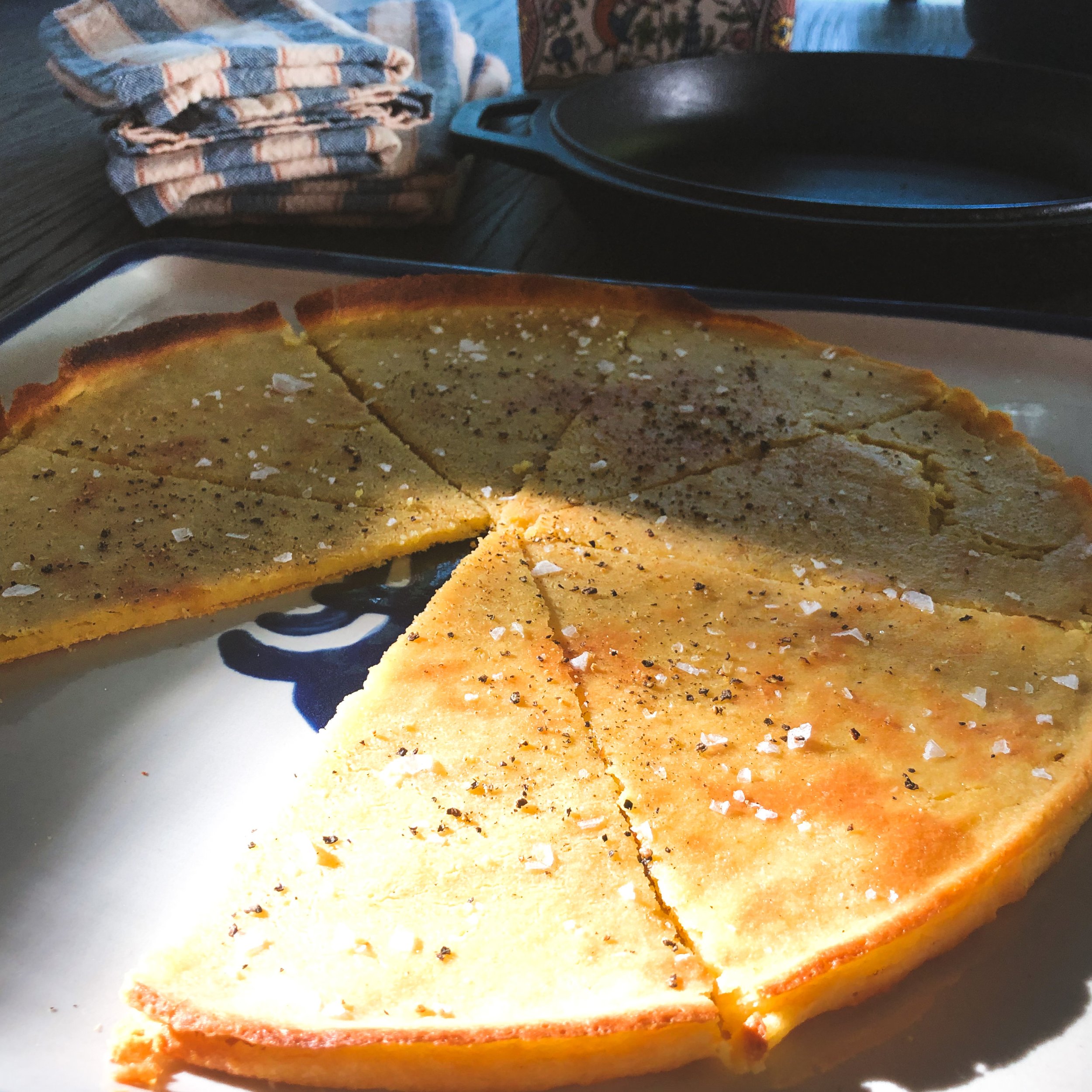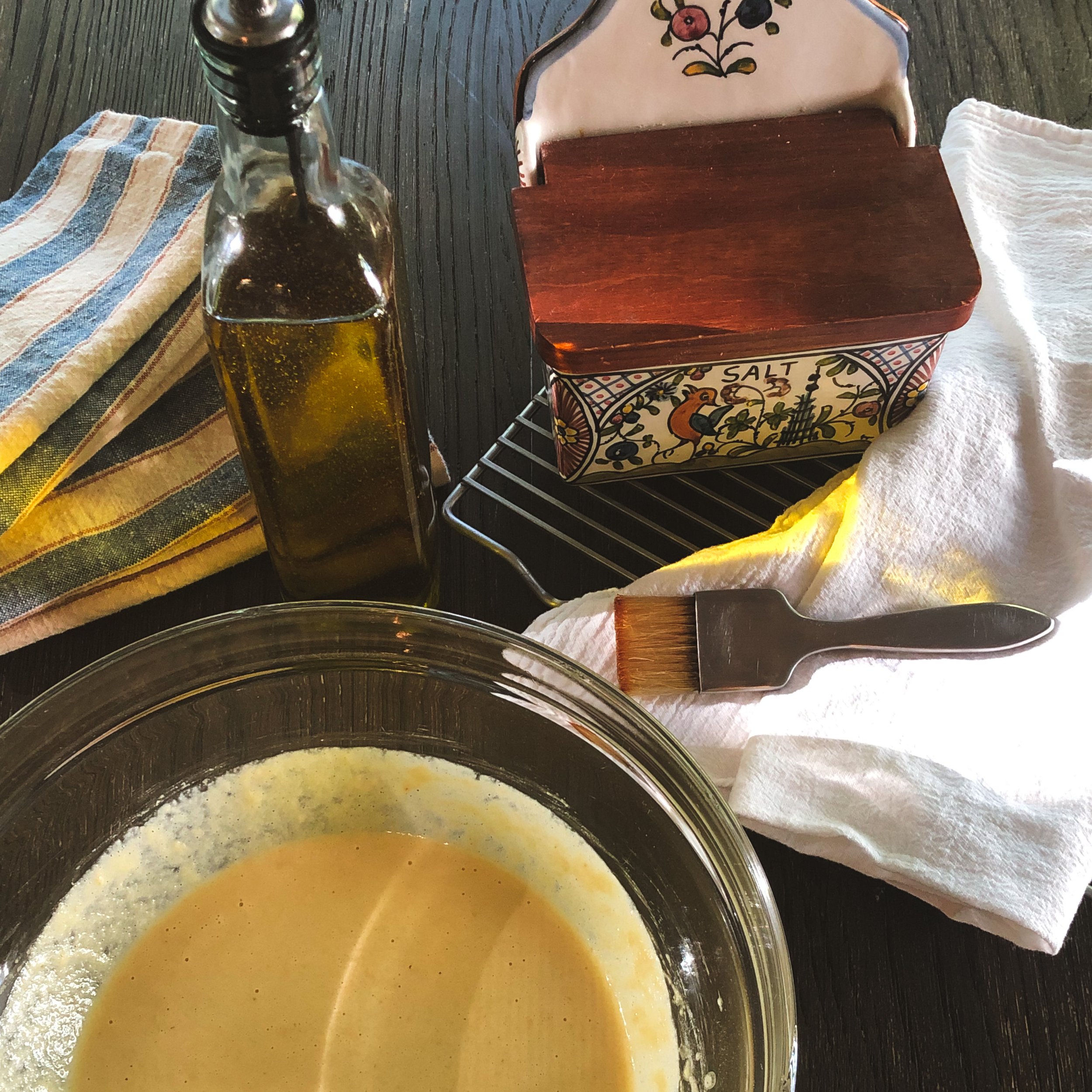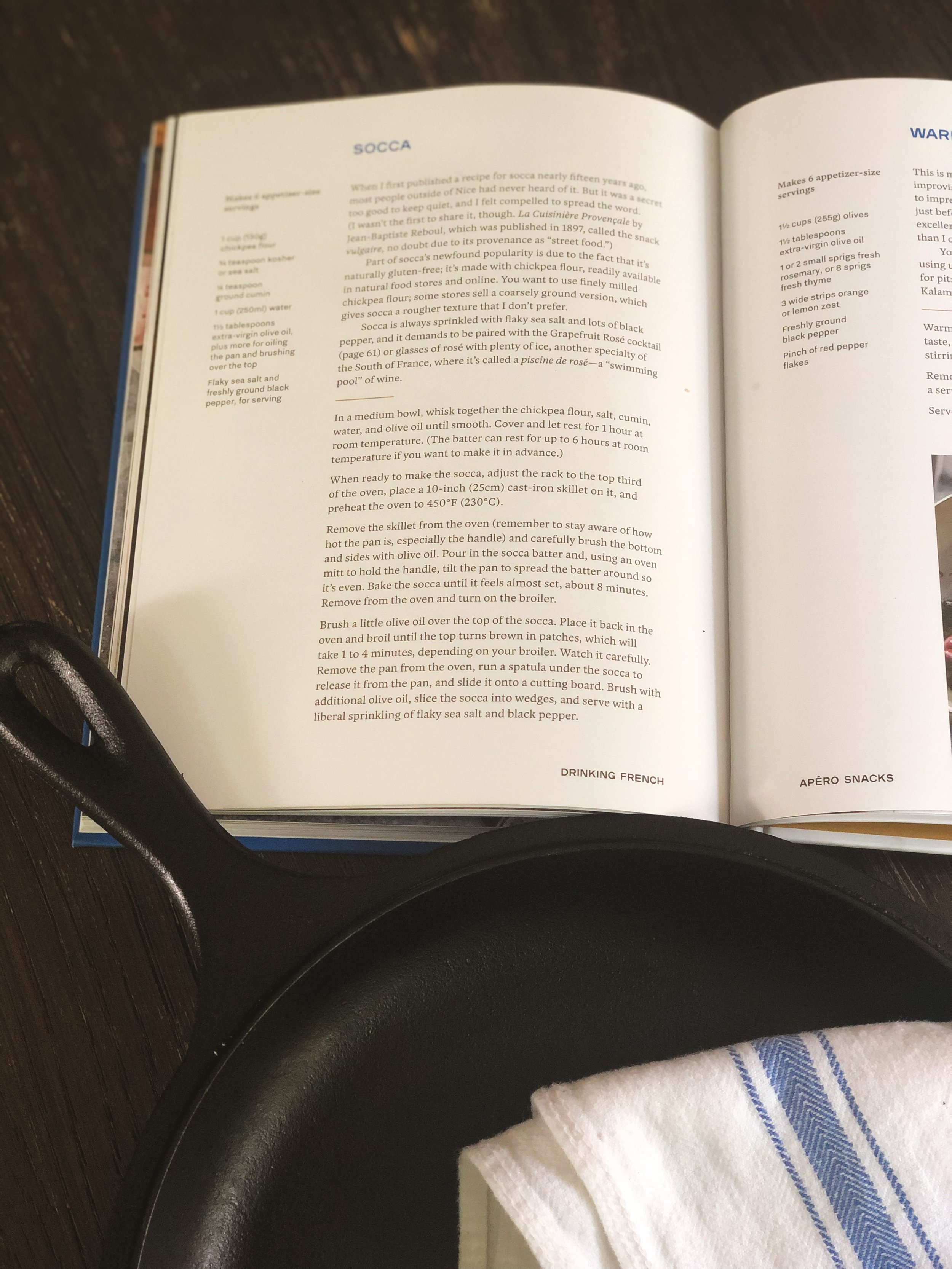Socca: A Chickpea Pancake Made In a Cast Iron Skillet
There are two foods I have an intimate relationship with in my kitchen: chickpeas and pancakes. Rows of canned chickpeas line my pantry shelves for a weekly, double-batch of homemade hummus. My three kids literally eat it straight out of the bowl with only a spoon. I suppose it’s in their genes given my Lebanese heritage. Similarly, pancakes are a constant request on the weekends for breakfast. We teeter back and forth between a box mix of buttermilk pancakes and making our own from scratch. Either way, there’s sure to be a lot of butter, syrup, and fresh berries involved.
Socca is essentially a savory French pancake made with chickpea flour. That’s right. Move over crêpes! You have some serious competition. Socca is a popular street food in Nice, France, and usually cooked in wood-fired ovens. To recreate socca using a home oven, you will need a cast iron skillet. I love. Let me repeat. I LOVE a recipe that calls for cooking in cast iron. As you might associate copper pots with quintessential French cooking, I view cast iron skillets as the hallmark of a true Southern kitchen.
On the nutritional side, socca is naturally gluten-free and vegan. So there’s no need to worry if you have gluten or vegan dietary restrictions, or you’re cooking for someone who does. Socca’s got you covered mes chers.
Admittedly, I have not been to Nice and experienced what authentic socca tastes like. But I do know of someone who has. David Lebowitz’ book Drinking French is a great source of inspiration for French inspired cocktails and happy hour snacks. It came as no surprise that he had a socca recipe in this cookbook, and I was ready to give it a try.
The list of primary ingredients you will need for this socca is short: chickpea flour, olive oil, flaky sea salt (or kosher salt) and fresh cracked pepper. Although ingredients are few, David advises working with quality ingredients such as finely milled chickpea flour and a really good olive oil. I used Bob’s Red Mill chickpea flour and a bottle of good extra virgin olive oil because that is what I could find at the grocery store. David’s recipe also includes cumin for a nice smoky flavor, to mimic the essence of socca cooked in a wood-fired oven.
The amount of time it takes to bake socca is relatively quick - about eight minutes to bake and then an additional four minutes under the broiler. The one time factor you’ll want to account for is that the batter will need to rest for at least an hour. It can rest up to 6 hours before baking, so you could prepare the batter in the morning and enjoy a warm slice of socca by mid-afternoon. My batter sat a little over an hour (the minimum time required), and I thought it turned out well. I’d like to try it again, giving the batter a longer rest period, to see if it impacts the final result.
When it comes time to make your socca, I have one piece of advice. Get those oven mitts ready, y’all! Yours truly had her oven mitts on, and I still managed to graze my pinky finger on the handle of the scorching hot cast iron. Similar to crêpes, you pour the batter in the center of the skillet and quickly swirl it around to coat the bottom of the pan in a thin, even layer. Unlike my experience in making crêpes, socca is fairly foolproof. No flipping the pancake or twist of the wrist technique required. Just a little upper body strength helps hoist that cast iron pan to and from the oven.
Socca should be thin, not thick like an American pancake. It should have a slightly blistered, crispiness on the outside and a soft center thanks to a few coats of olive oil.
To serve the socca, cut it into wedges and garnish liberally with flaky sea salt (like Maldon) and fresh cracked pepper. It’s best served right away while warm. I found that the longer the socca sits, the soggier it gets.
I’ll admit. Baking a dish I’ve only read about can leave a home cook feeling uncertain as to whether or not her version tastes authentic. Then again, there’s something liberating about the lack of expectation. If I enjoyed the dish I made and learned something in the process, then this socca was a success.
Click here for David Lebowitz’ socca recipe on his website, or you can order a copy of his book Drinking French here.
If you’re new to socca, I hope you’ll give it a try! If you have had socca before, what did you think? Did you enjoy an authentic slice in the South of France? Leave me a comment to let me know!


